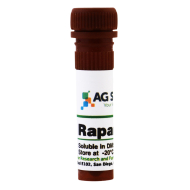Rapamycin, also known as sirolimus, is an immunosuppressant drug used to prevent rejection in organ transplantation; it is especially useful in kidney transplants.
 Background Information
Background Information
- Rapamycin, also known as sirolimus, is an immunosuppressant drug used to prevent rejection in organ transplantation; it is especially useful in kidney transplants.
- It prevents activation of T cells and B cells by inhibiting their response to interleukin-2 (IL-2).
- A macrolide, sirolimus was discovered by Brazilian researchers as a product of the bacterium Streptomyces hygroscopicus in a soil sample from Easter Island an island also known as Rapa Nui.
- It was approved by the FDA in September 1999 and is marketed under the trade name Rapamune by Pfizer (formerly by Wyeth).
- Sirolimus was originally developed as an antifungal agent. However, this use was abandoned when it was discovered to have potent immunosuppressive and antiproliferative properties.
- It has since been shown to prolong the life of mice and might also be useful in the treatment of certain cancers.
Mechanism of action
- Unlike the similarly named tacrolimus, sirolimus is not a calcineurin inhibitor, but it has a similar suppressive effect on the immune system.
- Sirolimus inhibits the response to interleukin-2 (IL-2), and thereby blocks activation of T and B cells.
- In contrast, tacrolimus inhibits the secretion of IL-2.
- The mode of action of sirolimus is to bind the cytosolic protein FK-binding protein 12 (FKBP12) in a manner similar to tacrolimus.
- Unlike the tacrolimus-FKBP12 complex which inhibits calcineurin (PP2B), the sirolimus-FKBP12 complex inhibits the mammalian target of rapamycin (mTOR, rapamycin being an older name for sirolimus) pathway by directly binding the mTOR Complex1 (mTORC1).
- mTOR has also been called FRAP (FKBP-rapamycin associated protein), RAFT (rapamycin and FKBP target), RAPT1, or SEP.
- The earlier names FRAP and RAFT were coined to reflect the fact that sirolimus must bind FKBP12 first, and only the FKBP12-sirolimus complex can bind mTOR. However, mTOR is now the widely accepted name, since Tor was first discovered via genetic and molecular studies of sirolimus-resistant mutants of Saccharomyces cerevisiae that identified FKBP12, Tor1, and Tor2 as the targets of sirolimus and provided robust support that the FKBP12-sirolimus complex binds to and inhibits Tor1 and Tor2.
Cancer
- The antiproliferative effects of sirolimus may have a role in treating cancer.
- Sirolimus was shown to inhibit the progression of dermal Kaposi's sarcoma in patients with renal transplants.
- Other mTOR inhibitors, such as temsirolimus (CCI-779) oreverolimus (RAD001), are being tested for use in cancers such as glioblastoma multiforme and mantle cell lymphoma. However, these drugs have a higher rate of fatal adverse events in cancer patients than control drugs.
- A combination therapy of doxorubicin and sirolimus has been shown to drive AKT-positive lymphomas into remission in mice.
- Akt signalling promotes cell survival in Akt-positive lymphomas and acts to prevent the cytotoxic effects ofchemotherapy drugs, such as doxorubicin or cyclophosphamide.
- Sirolimus blocks Akt signalling and the cells lose their resistance to the chemotherapy.
- Bcl-2-positive lymphomas were completely resistant to the therapy; eIF4E expressing lymphomas are not sensitive to sirolimus.
